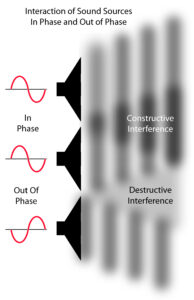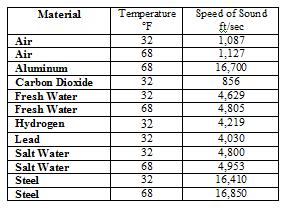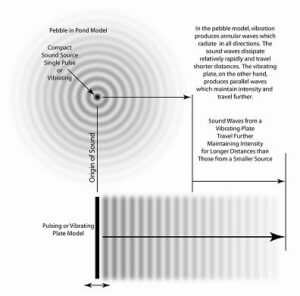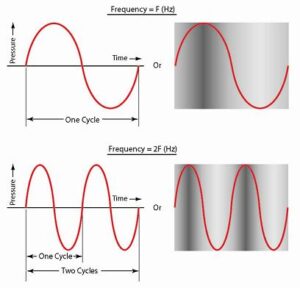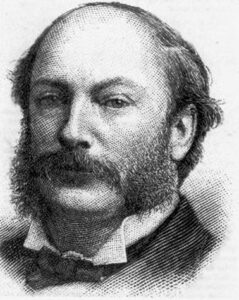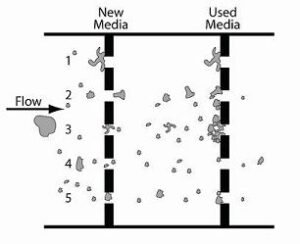Sound waves produced by multiple sources, or even within a single source in some cases, interact with one another to produce a variety of interesting and useful results. These interactions are commonly referred to as “interference” but one should not automatically conclude that this kind of interference is in any way related to the interference … Continued
The speed at which sound travels through a sound conducting media varies depending on the media. In general, sound travels faster in liquids than it does in gasses. Solids are the best conductors of all beating out both liquids and gasses. The speed at which sound travels through most materials depends on several variables including … Continued
In a preceding blog I explained how sound waves are produced by a vibrating or pulsing source. Today, I want to take a few minutes to talk about the way sound waves travel through a sound conducting medium and reflect from surfaces. Many years ago in high school physics class, I was taught that sound waves … Continued
Another of the basic properties of sound waves is frequency. Frequency is what we commonly call the pitch or tone of a sound. A higher frequency results in a higher tone while lower frequency results in a lower tone. Within the human hearing spectrum, a piccolo produces higher frequency or higher tones while a tuba … Continued
The first step to an understanding of ultrasonics is to understand the physics of sound. Sound is vibration conducted from a vibrating or pulsing source. Sound is transmitted by all matter with variations in efficiency and speed depending on the nature of the matter and its environment. In general, solids are the best sound conductors … Continued
The next series of blogs will explore ultrasonic cleaning in some detail. Today’s blog is an introduction to the world of ultrasound. The theory of sound was first defined and understood a little over 100 years ago when Lord Rayleigh published The Theory of Sound. Rayleigh was a Nobel Prize winner and, was also responsible for a number of … Continued
If a filter is doing its job, its life will be limited. Eventually it will have filtered out and collected enough particles to be severely restricted or totally block liquid flow. When this happens, the filter or filtration media must be replaced. A clogged filter will, at minimum, have process consequences as particle accumulations build up … Continued
The useful life of most media filters is determined by the size and quantity of particles they capture. Each filter has only a limited number of sites to trap particles. Once a site traps a particle, flow through that site’s passage is either reduced or stops completely. When a sufficient number of sites are blocked, flow through … Continued
One important step on the path to solving any problem is understanding the enemy and the risk it poses. The enemy, in this case particles, come in a wide variety of sizes and shapes. A particle’s effect on the ultimate use of the part it contaminates may depend not only on its size, but on … Continued
Many topics can’t be covered in a single, one page blog entry. For this reason, some of the more involved topics will be discussed in several sequential blogs with a common theme. This is the start of one such series about filters and filtration. In parts cleaning, filtration is applied to liquids used to clean … Continued

